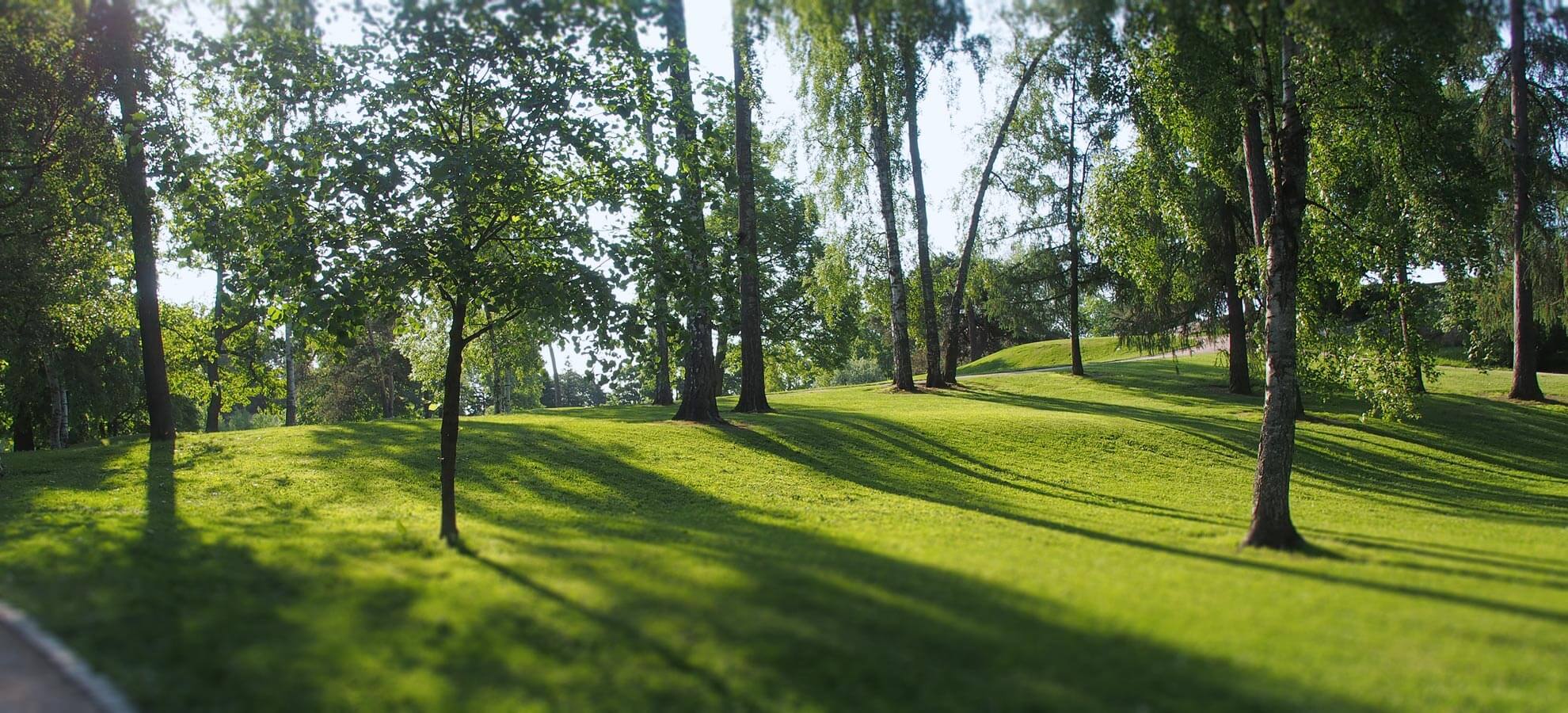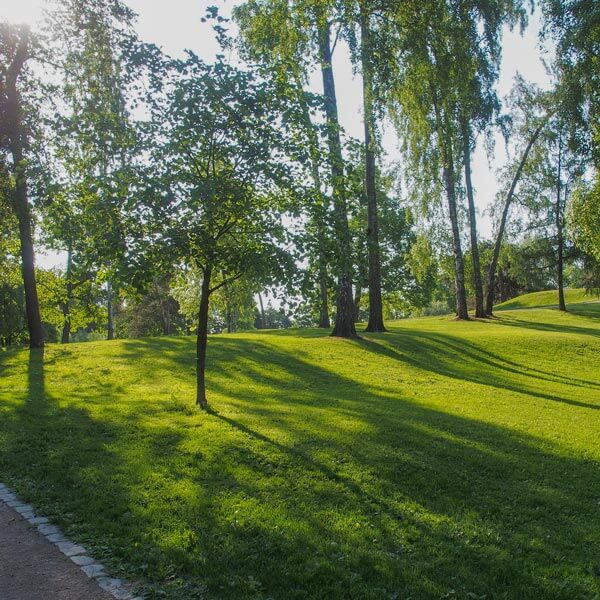Kaivopuisto has a fascinating tale to tell, and it is so popular that the city has had to limit the number of concerts and other public events in order to protect the park.
History
Well into the 1800s the southern tip of Helsinki was undeveloped land covered by rocks, forest and a few marshy areas. Locals would come here for long walks and picnics. The story of the park begins in 1834, when a businessman by the name of Henrik Borgström (1799–1883) leased the land from the city for 50 years. Borgström established a company to build a spa and park on the peninsula; the location was ideal for a sea spa, which had become fashionable in the early 1800s. The park would be sufficiently far away from the city centre, yet easy to reach by land and sea.
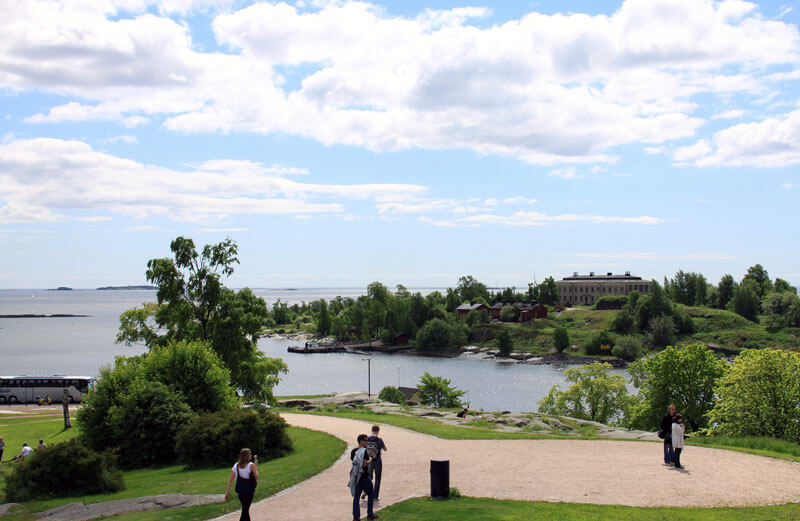
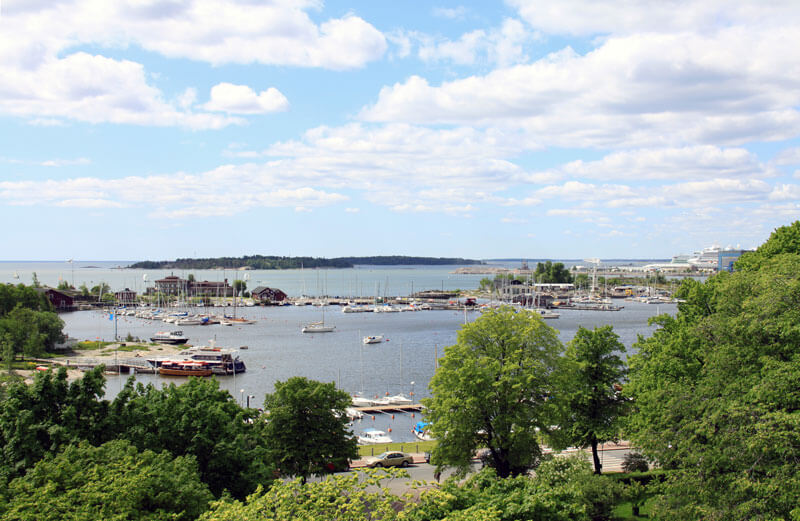
Borgström was a farsighted businessman. Tsar Nicholas I (1825–1855) prohibited Russian nobles from travelling outside the Russian Empire for political reasons. The tsar supported the spa project by buying shares in the company, and the Kaivopuisto spa became a popular holiday destination among high society in St. Petersburg. Helsinki remained a cosmopolitan spa destination for around 15 years.
The eastern section of the park was divided into plots for holiday villas. The tenants who rented these villas also had to accommodate visitors to the spa. The villas formed an attractive district, and some of the villas were quite splendid mansions – such as villa belonging to Countess Zinaida Yusupoff.
The spa’s park was designed by Carl Helm, a professional gardener from Germany. The marsh and low-lying areas were transformed into romantic ponds, with swans swimming in one and carp in the other. Long winding paths were built with beautiful flowerbeds and groupings of trees and shrubs. Visitors could admire the views from atop the rocky cliff, which they could reach by climbing up narrow steps that were cut into a crack between the rocks (and that are still used to this day). Birch and pine trees were planted in the rocky western section of the park. The wide alley (Iso puistotie) that divided the park was lined by a double row of linden trees imported from Germany.
The spa itself was built beside the sea where Café Ursula now stands. Guests could take a dip in the sea and enjoy a range of treatments, including sulphur baths and various showers. Naturally, the ladies and gentlemen bathed separately. The spa had its own doctor, and fitness programmes were offered also to the ladies. Bathing in the sea water was thought to calm the nerves, and there was even a separate swimming section – although most guests at the time did not know how to swim.
[singlepic id=104 w=100 h=100 float=left]The spa’s restaurant and entertainment complex, Kaivohuone, was built in 1838, and the grand opening of the spa was held on 5 June. Both the spa and the restaurant were designed by none other than Carl Ludvig Engel. Guests were served healthy food with mineral water invented by local chemist Victor Hartwall (1800–1857), founder of a drinks empire that lives on to this day. The evening entertainment included dancing, masquerades and concerts. In the daytime guests could stroll around the park, play bowls and other games, listen to military bands and watch open-air theatre performances.
The Crimean War in 1854, an outbreak of cholera and the rescinding of the travel ban led to the eventual decline of the spa. When Tsar Alexander II (1818–1881) came to power in 1855, Russian high society could again travel to the spas on the continent. The spa was closed during the summer of 1856 due to the war. When the British and French navies bombarded Viapori (Suomenlinna) for four days, the locals gathered atop Kaivopuisto and Observatory Hill Park to view the spectacle.
In 1858 Louis Kleineh (1807–1874), Kaivohuone’s restaurateur, had an impressive theatre built along the northern edge of the park. The Park Theatre (Puistoteatteri) was expanded in 1863 to seat up to 510 people under a canopy. The stage in Esplanade Park had burned down in the same year, so the Park Theatre attracted appreciative audiences. The stage hosted visiting theatre troupes, vaudeville performers, circus artists, and even opera and balet companies. After Kleineh left Kaivohuone in 1869 the theatre fell into disrepair and was torn down in the spring of 1874.
Exposition of Finnish Industry, 1876
The first trade fair in Finland, the Exposition of Finnish Industry, was held in Kaivopuisto in summer 1876. The event marked a major stepping stone in the nation’s history. The Finnish statesman Johan Vilhelm Snellman (1806–1881) initiated the project already in 1868, but the famine years delayed the exposition. Local industrialists revived the idea, and the Senate provided financial support. The architect Theodor Höijer (1843–1910) was commissioned to design the exposition halls.
The event attracted an impressive 1769 exhibitors. The exposition opened on 1 July and ran until mid-September. The stalls presented agricultural and industrial machinery and equipment, including a Finnish-made locomotive. There was also an ethnographic section that featured furnished country homes, providing the foundation for the collections of the National Museum. Splendid floral arrangements with exotic plants and a fountain were created by the Bonhoff gardeners and made a big impression, especially on the ladies.
Boats and ships were displayed along the shoreline. The Sinebrychoff Bierhalle sold beer, Hartwall sold mineral water, and food was available from the fancy Kaivohuone restaurant or the more affordable park restaurant. There was also a café in the main exposition building.
Two weeks after the opening, the exposition was attended by Tsar Alexander II, the Empress consort Maria, their son Tsarevich Alexander and his wife, Maria Feodorovna (Dagmar of Denmark). The royal visit was a huge attraction. The tsar was evidently satisfied with what he saw, as were the 93,000 people who had bought tickets. The exposition did much to elevate the nation’s self esteem. Visitors were proud of the industrial and artistic achievements of their countrymen, and the exhibitors gained confidence in their own production.
City park
The 50-year lease agreement expired at the end of 1885, and the City of Helsinki took over the park again. Kaivopuisto became a city park open to everyone. The city sold off the 17 plots of land where the villas had been built along the eastern edge of the park. Kaivopuisto was transformed. The urban upper and middle classes had been attracted to live near the park, and they became its new users.
In 1891 Svante Olsson, Helsinki’s first official City Gardener who had been recruited from Sweden in 1889, drew up new plans for the park. In keeping with the trend at the time, Olsson created scenic viewing points in both Kaivopuisto and Observatory Hill Park. A lot of attention was paid to the lines of sight. Paths meandered through the park. The large and uncluttered lawns were also an important element in the design. Groupings of trees and shrubs were planted where the paths intersected. The fish pond was dried and replaced by the first playing field in Helsinki. The southernmost part of the park, which had been left in its natural state, was landscaped and beautified with new plants. Most of the old trees were left standing, although many perished in the great storm of 1890. Pine trees were planted in the rocky sections of the park.
To obtain the best views and ensure an unobstructed vista, a lot of the granite bedrock was blasted between Kaivohuone and the sea. Impressive flowerbeds were planted in front of the restaurant. The renovation of the park caused heated debates, as new trees had been planted and were rather modest looking in the initial years. The renovation work nevertheless continued all the way up to the First World War.
Visitors to the park were expected to be gentlefolk who behaved with propriety. Aristocrats were replaced by refined bourgeoisie. Kaivopuisto was not yet a people’s park, as uncultivated people who hung hammocks between the trees, for example, were frowned upon.
In the 1890s railway lines were built across the southern peninsula, running between Kaivopuisto and Puistokatu, partly through tunnels. The railway was removed in the 1980s. The historic seaside spa that had been situated at the end of Iso Puistotie was destroyed during the aerial bombardments in 1944. The construction of the coastal Ehrenströmintie around the tip of the peninsula in the 1940s changed the nature of the park decisively by separating the park from the coast.
Puiston vuokrasopimus umpeutui vuoden 1885 lopussa ja kaupunki otti puiston haltuunsa. Kaivopuistosta tuli kaikille avoin kaupunkipuisto. Kaupunki myi vuokramaalla sijainneet 17 huvilatonttia puiston itälaidalta. Puisto kävi läpi perusteellisen muodonmuutoksen. Urbaani ylä- ja keskiluokka oli muuttanut puiston lähelle ja heistä tuli sen uusia käyttäjiä.
Poetry benches, public art and buildings
The Kaivohuone restaurant was designed by Carl Ludvig Engel and completed in 1838. Both as a building and as an integral part of Kaivopuisto, Kaivohuone is one of the most historic and prestigious restaurants in Helsinki. The building has gone through several changes over the years. The current appearance dates back to 1867 and is mostly the work of Theodor Höijer. Kaivohuone currently operates as a private restaurant.
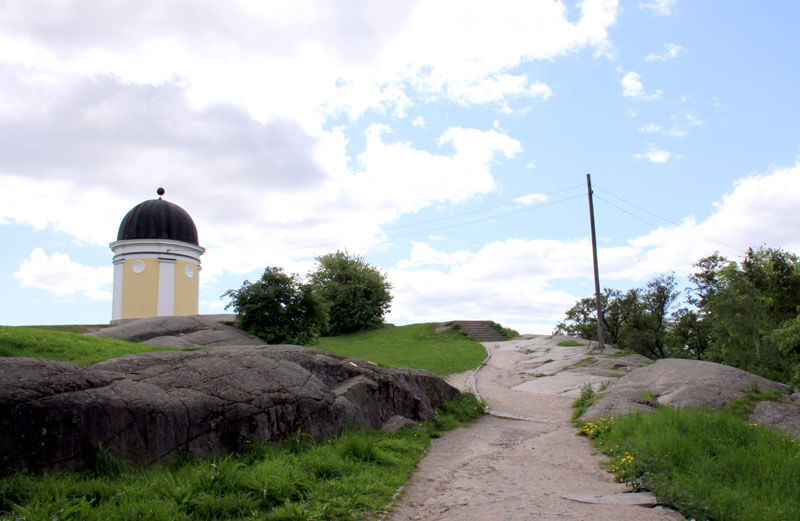
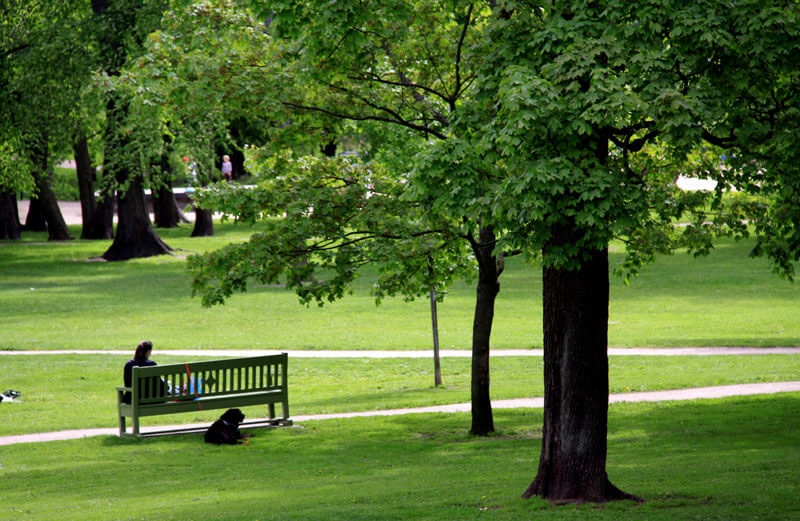
At the highest point in the park is the Ursa Observatory that dates back to 1926. The Ursa Astronomical Association was founded in 1921 and currently has over 15,000 members. The association offers popular public shows at the observatory during clear weather.
Two historic villas can still be admired along the western edge of the park. A daycare centre operates out of the villa at Puistokatu 2, which was originally designed as a residential building by Hugo Neuman (1847–1906) and completed in 1876. The building has gone through numerous changes since then, so that only the rock foundation and some walls are still the same.
The villa at Puistokatu 4 is currently used as an office and by the Museum of Finnish Architecture. Designed by C. H. Nummelin and completed in 1881, the two-storey wooden villa is original and represents a fine example of late 19th-century villa architecture in Helsinki. The villa was once the home of the actress Ida Aalberg (1857–1915) and her husband, the lawyer and fervent Fennoman Lauri Kivekäs (1852–1893).
Behind Kaivohuone grows the Tree of Independence, a spruce donated by Consul General Rudolf Ray to Finland in 1917. He also donated the memorial plaque in 1931. The patriotic text is worth reading. Saplings grown from the seeds of the spruce have been planted throughout Finland.
At the Kaivohuone end of the main alley is a red granite drinking fountain entitled The Fishing Bear. It was designed by the sculptor Bertel Nilsson (1887–1939) and unveiled in 1916. The sculpture was the result of a competition arranged in 1915 to beautify the city.
At the corner of Itäinen puistotie and Ehrenströmintie is a memorial to Arvid Mörne, a Finnish-Swedish poet. The memorial was the result of a design competition organised by the Nylands Nation student body, which was won by the sculptor Viktor Jansson (1886–1958). The memorial was completed in 1951 and unveiled the following year.
Another memorial along Ehrenströmintie is dedicated to Adolf Erik Nordenskiöld (1832–1901), an important Finnish scientist and explorer who was the first to sail the Northeast Passage from the Arctic Sea to the Pacific Ocean in 1878–1879. The memorial comprises three connected granite slabs symbolising icebergs and pack ice. The work also includes a relief map showing the route Nordenskiöld sailed through the Northeast Passage. The memorial was designed by the sculptor Heikki Häiväoja (1929–) and the architect Eric Adlercreuz (1935–), and the bust of Nordenskiöld was made by Johanna Häiväoja (1960–). The memorial was unveiled in 1985.
Four surprises can be found in Kaivopuisto in the form of sculptures carved out of dead trees by the artist and dancer Sanna Karlsson-Sutisna (1965–). Her trademark is temporary art that is allowed to decay in the natural environment, bringing joy to viewers who discover her art in unexpected places. The faces she has carved into the trees in Kaivopuisto are like ancient tree spirits.
In 2005, 30 new “poetry benches” were added to the park. Each bench has a brass plaque on the back inscribed with a poem. This was the Public Works Department’s first project involving corporate sponsorship. The benches were donated by the directories company Fonecta, and the poems were collected from well-known contemporary Finnish poets. At the unveiling ceremony, the poets expressed their joy that their poems were being liberated from the pages of books and brought outside for people to enjoy in the park. The poetry benches continue to be very popular. How many suitors have proposed on the bench bearing the words of Mirkka Rekola (1931–): “I love you. I’m telling everyone”? The benches themselves are modelled on a historical Kaivopuisto design and handmade in the city’s own workshop.
The popular playground in Kaivopuisto features a splendid wooden dragon accompanied by an owl, cormorant and kingfisher atop poles. The wooden sculptures were made at the Public Works Department’s former workshop. Next to the playground towards the sea is an area for playing chess with giant pieces. Behind the adjacent public toilet are massive doors leading into the cliff, where emergency and maintenance vehicles can drive through a tunnel under the sea to Suomenlinna. Two additional public toilets are planned for the park and will be built in the coming years. The older public toilet behind Kaivohuone will be converted for new uses. Larger waste bins have been introduced, including Citykita and Molok containers that are two-thirds underground.
The newest sculpture in Kaivopuisto is Expectation by Pekka Jylhä (1955–), which was unveiled on Mother’s Day 2010 on a low rocky outcrop in the western corner of the park. Polished to a golden sheen, the bronze piece depicts an expectant mother in a lace-hemmed dress, her left hand resting lightly on her softly swollen belly. The young mother is wearing sneakers, and her socks have rolled down to her ankles. She has turned her eyes to look far out to the sea. An electric light inside the sculpture shines through the lace on her belly. The piece also includes a beach ball made of the same polished bronze as the female figure. The sculpture was donated by the Kesko Corporation to the City of Helsinki as a way of showing social responsibility for children, families, mothers and a safe future. The ceremonial unveiling in the chilly spring weather was attended by a large number of locals.
A living park
Kaivopuisto can rightfully be called a people’s park these days. It is a popular place for recreation among local residents, as well as a major event venue and picnic spot for the entire city.
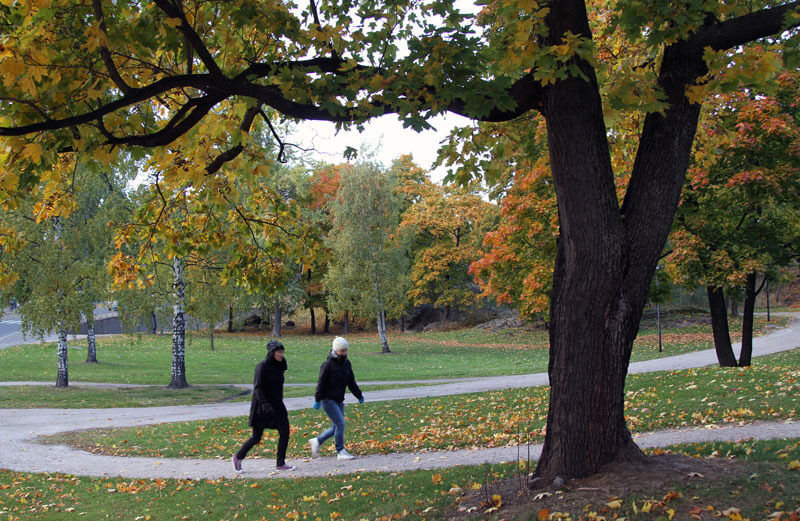
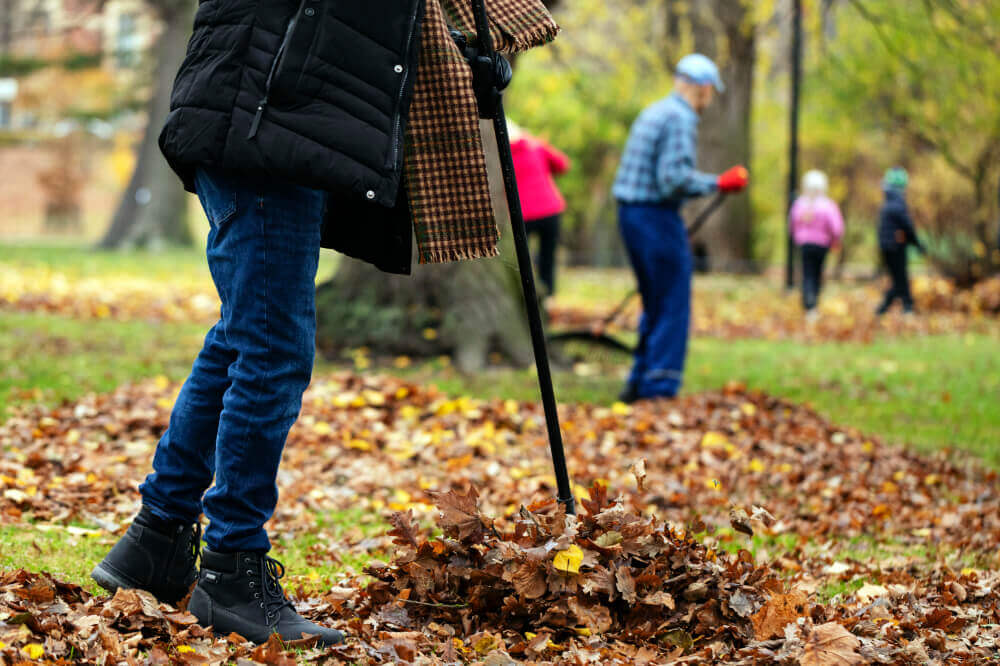
Bengt Schalin, City Gardener from 1946 to 1957, diversified the plant life in Kaivopuisto and other parks considerably. Schalin was particularly fond of crabapple trees. Kaivopuisto also features an American black poplar, a European white elm and a beech alongside the more traditional deciduous trees. Opposite Kaivohuone along the edge of the residential district is a splendid rhododendron grouping that was planted together with the University of Helsinki in the late 1970s.
The development plan for Kaivopuisto was drawn up by landscape architect Gretel Hemgård. Accordingly, the park will be renovated in stages. The white garden in the western section of the park, where mostly white-flowering trees and shrubs can be found, was completed in the late 1990s.
Each spring the park is subjected to the “Vappu” May Day celebrations, when around 45,000 people gather in Kaivopuisto for picnics and merrymaking, rain or shine. The Public Works Department has worked hard to protect the park as much as possible during the celebrations. The picnics were becoming exceedingly elaborate, and even sofas were being brought to the park and left there afterwards. The Public Works Department and daily newspaper Helsingin Sanomat have organised a bottle collecting campaign in Kaivopuisto each year since 2005, which has helped clean up the park considerably. The next goal is to encourage people to respect the park and to minimise the amount of waste created by their picnics. See Volunteer Helsinki website for more information.
Renovation of the main alley
In 2009 work began on renovating the main tree-lined alley connecting Kaivohuone to the sea. Most of the trees were so rotten that there was no option but to replace them, especially following the tragedy in 1998 when strong winds knocked over one of the old linden trees, killing a young woman.
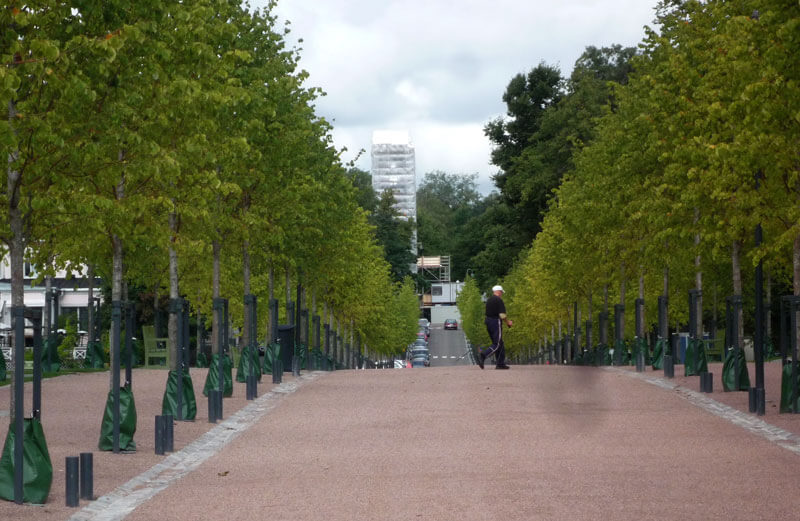
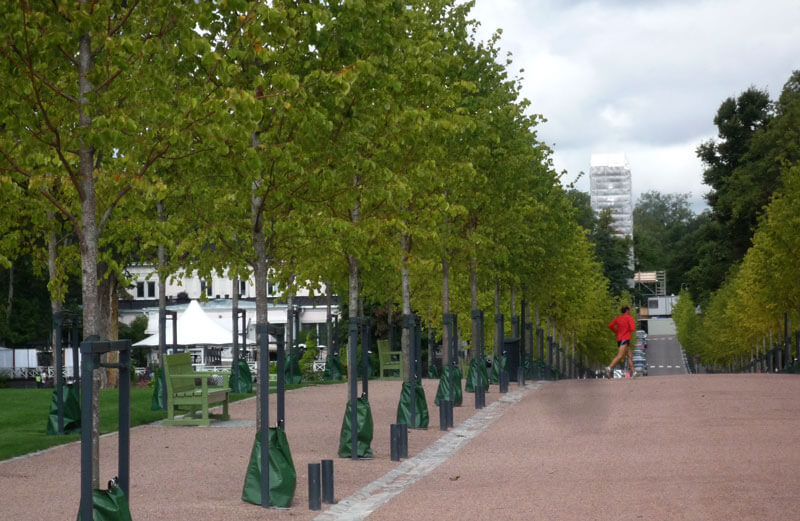
The aim has been to replace the old trees with healthy trees that are all the same age. The project provoked a lot of debate that did not subside. The planting work was even delayed when one council member, who wanted some of the old trees to be retained, called for a landscape permit.
Procuring 184 high-quality linden trees of the same size was also a challenge. Since the trees were not available from Finland, they were eventually ordered from Kortegaards Planteskole near Odense in Denmark. The new trees are Kaiser lindens (Tilia x europaea ‘Pallida’).
The soil for the original trees in the 1830s was not very deep due to the bedrock, but this has now been excavated to provide sufficient space for the roots to grow. The new soil contains a lot of minerals to provide a supportive base for the trees. The four-metre-high saplings should serve their purpose along the main alley for the next 500 years. At the same time that the trees were planted, the drainage and lighting were also renewed to ensure the future of this most popular of parks.

